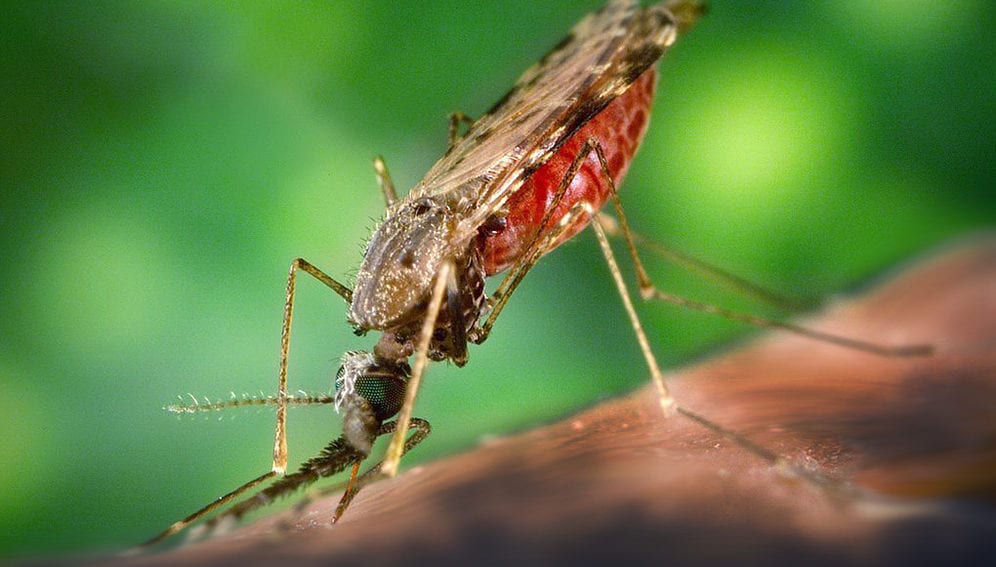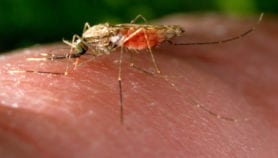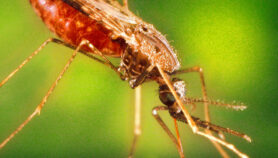03/06/19
Genetically modified fungus hailed as malaria breakthrough

By: Ruth Douglas
Send to a friend
The details you provide on this page will not be used to send unsolicited email, and will not be sold to a 3rd party. See privacy policy.
A fungus genetically engineered to produce spider toxin can crush populations of malaria-spreading mosquitoes, according to a study hailed as a breakthrough by international scientists battling to combat the disease.
In trials undertaken in Burkina Faso, mosquito numbers were reduced by 99 per cent within 45 days, according to researchers from the University of Maryland (UMD) and the West African nation’s IRSS research institute.
Malaria is a life-threatening disease spread by the female Anopheles mosquito. In 2017, there were an estimated 219 million cases worldwide, claiming 435,000 lives, according to the World Health Organization. The vast majority of cases are in Africa.
“No transgenic malaria control has come this far down the road toward actual field testing. This paper marks a big step and sets a precedent for this and other transgenic methods to move forward.”
Brian Lovett, lead author of the paper, University of Maryland’s entomology department
Brian Lovett, of the University of Maryland’s entomology department and lead author of the paper published in the journal Science, said the study had “broken through a barrier”.
Researchers took a strain of the fungus Metarhizium pingshaense, which infects mosquitoes in the wild, and genetically modified it to produce a toxin found in the venom of the Australian Blue Mountains funnel-web spider.
Laboratory trials showed the genetically modified fungus killed mosquitoes more rapidly than they can breed, according to the study.
The insecticide was then unleashed in a purpose-built 6,550-square-foot ‘village’ in Burkina Faso, containing huts, plants, and breeding pools, and covered in netting to stop the insects escaping.
Raymond St. Leger, professor of entomology at UMD and co-author of the study, said: “You can think of the fungus as a hypodermic needle we use to deliver a potent insect-specific toxin into the mosquito.
“These fungi are very selective,” he added. “They know where they are from chemical signals and the shapes of features on an insect’s body. The strain we are working with likes mosquitoes.”
The study was the first trial outside of a laboratory using a transgenic approach to fighting malaria, according to the university.
Describing the research in Science, Lovett said: “No transgenic malaria control has come this far down the road toward actual field testing. This paper marks a big step and sets a precedent for this and other transgenic methods to move forward.”
Colin Sutherland, co-director of the Malaria Centre at the UK-based London School of Hygiene and Tropical Medicine, said the results were “very promising”.
“Current mainstay methods for Anopheles control target mosquitoes resting or biting indoors and rely on synthetic chemical insecticides. This new biocidal approach targets mosquitoes biting and resting outdoors as well as indoors, and may be less vulnerable to the problem of insecticide resistance,” he said in a press statement.
But Sutherland cautioned there remained many questions around the findings, including any potentially negative impacts of the agent.“The next step will be to determine whether transgenic metarhizium is effective in an epidemiological trial, for example to test whether it has an impact on malaria,” he added.
The international team hope to test their transgenic fungus next in a real village or community and say the findings help make the case for such a trial to go ahead.













